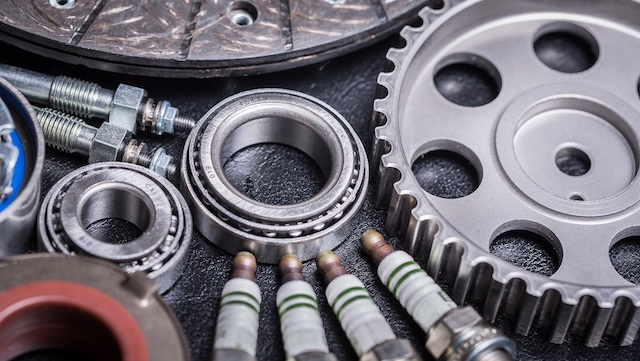How Will A Decade Of Ridesharing Affect The Auto Parts Industry?
Ridesharing has become one of the most common modes of transportation. People are ditching taxis, buses, and trains in favor of ridesharing. Is ridesharing around to stay? Is it going to become more popular? Or is it going to fade into obscurity a la Blockbuster?
No one knows for sure. Yet, the general consensus is that ridesharing will remain popular in the years to come.
Why Ridesharing Will Likely Remain Popular

Here are a few good reasons why ridesharing isn’t going anywhere:
- It’s expensive to own and maintain a car. If you don’t travel a lot, you’ll save some money by using ridesharing services. You only have to pay for the ride. You don’t have to worry about car payments, insurance, parking fees, gasoline, maintenance expenses, and so on. With the rising costs of new and used cars, it’s no wonder some people turn to ridesharing instead of car ownership.
- Ridesharing is more convenient than using public transportation. You don’t have to walk to the nearest train station or bus stop. You also don’t have to dig up any cash. Your payment information is already stored in the ridesharing app. All you have to do is open up the app and order a car, and a driver will pick you up wherever you are. It can’t get any easier than that.
- Ridesharing creates jobs. Many drivers get to choose their own hours, and they can make a decent income by driving people around.
- Ridesharing services are available 24/7. Many bus and train services operate within certain hours. Sometimes people will have no choice but to use ridesharing services. Demand for ridesharing services will remain, especially between midnight and dawn.
Mordor Intelligence predicts that the value of the ridesharing market will rise from $73.07 billion (2020 value) to $209.60 billion in 2026. Here’s Mordor Intelligence’s explanation for this prediction:
”The increase in demand for cost-saving and time-saving transport will drive the market. The increasing cost of vehicle ownership, the need for reducing traffic for environmental concern, and government regulations promoting ridesharing options are some of the major factors driving the adoption of ridesharing services across the world.”
If ridesharing in fact becomes more popular over the next decade, what does this mean for the auto parts industry?
How A Decade Of Ridesharing Will Affect The Auto Parts Industry

The wide presence of ridesharing means that fewer people will own cars in the future. Yet, that doesn’t necessarily mean that your auto parts shop will lose business. Rideshare drivers have their vehicles serviced and repaired more often.
- The rideshare driver drives to point A to pick up the rider.
- The driver drives to point B and then drops off the rider.
- The driver drives to another location to pick up another rider.
All that driving in between trips adds up. That’s why you may see an increase in demand for car parts, despite there being fewer car owners on the road.
You may also see an increase in demand for high quality auto parts. Savvy high-mileage rideshare drivers are willing to splurge on high quality auto parts. Often times, labor makes up a good chunk of a car service or repair bill. These drivers want to avoid paying labor charges twice, so they don’t use cheap parts. That’s why they’re willing to pay more for an OE-quality part that will last twice as long.
So be sure to stock up on high quality parts, like GMB parts!
Making Loyal Customers Out Of Rideshare Drivers

Rideshare drivers have their cars serviced and repaired more often than the average person. On average, a car racks up about 16,000 miles per year. Rideshare drivers rack up many more miles than that. It’s not uncommon for rideshare drivers to log more than 50,000 miles a year. That’s 5-10 oil changes per year.
As an auto parts shop, you can profit from the ridesharing boom. It’s pretty easy: make loyal customers out of rideshare drivers. Here are a few incentives you can offer them to make your shop their go-to shop:
- Offer a discount (or an exclusive rewards program) to drivers who can prove that they’re employed by a ridesharing company
- Offer rideshare drivers some goodies, such as bottles of hand sanitizer or candy to give to their riders
- Partner up with Uber, Lyft, and/or other ridesharing services to have their drivers use your parts and/or services
If you want your auto parts shop to remain successful in the years to come, be sure to adapt with the times. That means adapting to the rise of EVs and ridesharing services.
We would love to hear your feedback! Contact us to share your thoughts!
MORE CONTENT
Stay current!
Sign up here to get the latest news
and updates on all things GMB.
Sign Up To Receive GMB News & Updates!

